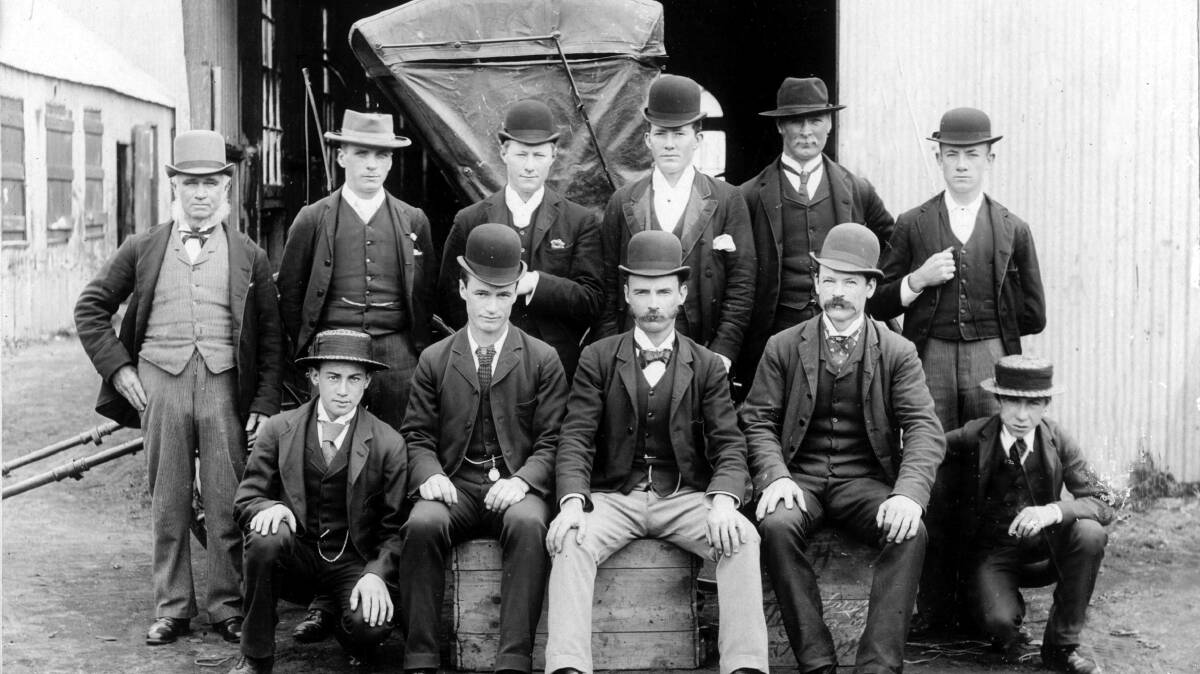
A photo of coach and buggy builders the Wright Brothers and staff is featured in the Goulburn Post’s 2017 Calendar for May.
Subscribe now for unlimited access.
$0/
(min cost $0)
or signup to continue reading
From about 1883, the Wright Bros built horse-drawn buggies, sulkies and wagons for many in the district in an era when this was the only means of private transport.
The firm was initially a partnership known as Wright Brothers and Slayter, but upon the dissolution of this partisanship the brothers became the sole proprietors.
At the height of their trade, the Wright Brothers were regarded as the leading coach builders of inland NSW
At the height of their trade, the Wright Brothers were regarded as the leading coach builders of inland NSW, while they plied their trade for over 40 years.
The brothers, John William (Jack) Wright, Joseph, George and Frederick, operated from premises in Clifford Street, Goulburn from 1885 on the site where St Andrew’s Presbyterian Church now stands. Prior to this they operated from Verner Street.
At its height the business employed about 30 people and also had agencies at West Wyalong,and Tumut, making them well-known throughout the Southern Tablelands.
The Wright Brothers got the contract with Cobb & Co Coaches to maintain the passenger and mail stagecoaches used on the Southern Tablelands routes and this no doubt ensured they had a lot of business.
They were also well-respected craftsmen with their knowledge of spring making as well as fine paintwork and leather upholstery skills.
The early 20th century saw the advent of motor vehicles and the eventual decline in coach building, but the Wright Brothers expanded and diversified their business in 1915 to include a garage section dedicated to the maintenance of motor cars
Eventually, however, the popularity of the motor car had a negative impact on the business, however the Wright Bros continued to manufacture horse drawn vehicles until 1924.
In that year the business closed and John and Joseph retired. Frederick had left left the firm around 1900 and George soon after to concentrate on his stone masonry work. He was known for building many stone houses in Goulburn and district.
There was a final reunion of the brothers in 1932 in Goulburn before this pioneering chapter of Goulburn’s history closed.


